The North Pole is melting and it's exposing some nasty things.
Masses of ancient frozen carbon threaten to release thousands of tonnes of greenhouse gases into the atmosphere.
Deadly "zombie pathogens" are feared to be lurking beneath the permafrost.
But it is also opening up resources and trade routes that, until now, were inaccessible.
That has led to a burgeoning power struggle between nations that is beginning to play out in the high north, under the long shadow of Russia’s war on Ukraine.
Resources and rivalry
For the world’s great powers, the retreating ice is opening up a treasure trove. The Arctic Sea teems with fish.
Diamonds, gold, copper, zinc, uranium, rare earth minerals, as well as vast reserves of oil and gas, worth trillions of dollars, lie untapped.
Who will get their hands on these riches is in part a question for the United Nations, but an increasingly thorny one.
The UN Convention on the Law of the Sea gives the five Arctic coastal nations – the US, Russia, Canada, Norway and Denmark – sovereign rights over an exclusive economic zone, 200 miles offshore, within which they can mine, fish and explore.
So far, so good.
But coastal states can stake a claim to a wider area, if they can show it’s an extension of their continental shelf.
Mapping the seabed under a polar cap is no mean feat, however – and it’s hard to prove that your continental shelf doesn’t in fact belong to someone else.
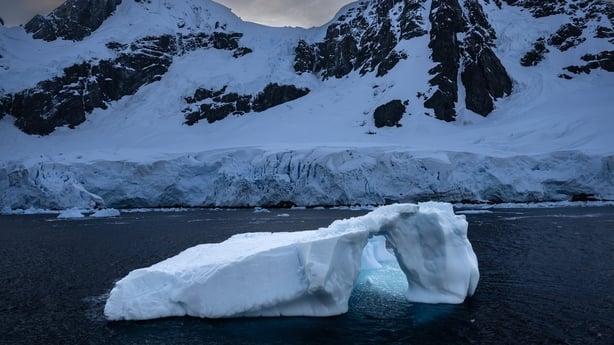
The UN can assess individual claims, but it can’t adjudicate the overlapping ones, leaving that up to member states themselves to resolve.
That’s easier said than done in today’s highly charged geopolitical environment. Diplomats fear unilateral action by any state could lead to instability.
Meanwhile, non-Arctic nations say no one can plant a flag on the North Pole because it belongs to everyone.
Environmentalists point to new treaty on the High Seas, adopted at the UN just last month, which earmarked 30% of waters beyond national jurisdiction for "marine protected areas".
The treaty will have to be ratified by 60 member states before it goes into effect, prompting concern from campaigners that critical time will be lost.
The high seas of the North Pole host some of the most valuable parts of Arctic ecosystems, but are under high pressure from climate change, Jan Dusik, head of WWF Global Arctic Programme, told RTÉ News.
To make UN treaties work, of course, you need multilateral cooperation and dialogue. The problem is that the Arctic countries have stopped talking to each other.
Deep freeze
The Russian Federation, which owns nearly half of the Arctic coastline, sits alongside Finland, Norway, Canada, Iceland, Denmark and Sweden, as well as a smattering of observer nations, on the Arctic Council.
The voluntary body coordinates efforts in areas of mutual interest, such as indigenous populations, scientific research or bi-lateral search and rescue missions.
But, last year, after Russia invaded Ukraine, relations got frosty.
Unwilling to hand Moscow any sort of PR victory, collaborative projects were shuttered and the body split into two camps, mirroring the same geopolitical divisions that stymy the United Nations Security Council.
"On the security side, Russia's invasion of Ukraine triggered Sweden and Finland’s NATO membership applications," said Professor Elana Wilson Rowe, of the Norwegian Institute of International Affairs.
The means Russia the only non-NATO member.
Like many conflicts, there is a human cost to the diplomatic stand-off. Of the four million or so people who live in the Arctic region, 10% are indigenous.
"They have brothers and sisters in Russia," said Prof Wilson Rowe.
"It's the spectre of the Cold War nightmare, losing contact with people across borders."
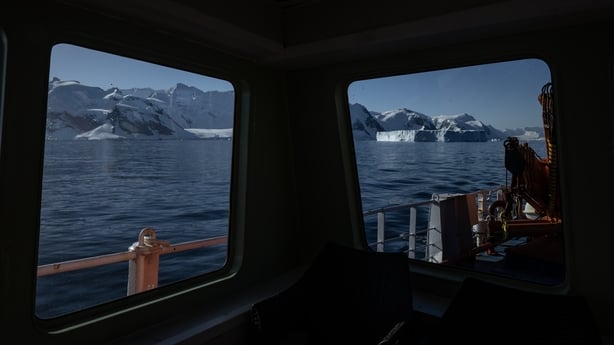
Thawing ice, heating tensions
Moscow, given the cold shoulder by the West, turned east towards Beijing.
"It almost seems like a breakup story," Prof Wilson Rowe said, noting that Russia was hoping to elicit concessions from the other Arctic countries by holding up its new relationship with China.
And deepen the relationship they did.
To the surprise, and alarm of some observers, the coastguards of China and Russia struck a deal on Arctic maritime policing in April.
"It is a sign that Russia now wants to let China into its Arctic territories and waters in a way that was not contemplated until recently," said Professor Arild Moe, of the Fridtjof Nansen Institute.
Moscow was always happy to take Chinese financing for Arctic development, but careful not to let China establish a physical presence in its back yard.
"This is really like letting somebody you don't trust inside your house," said Marisol Maddox, an arctic analyst.
Why is China so keen to get into the Arctic?
Its strategic value and wealth of resources aside, the Arctic offers a brand new "silk road" across the top of the globe.
The some 6,000km-long Northern Sea Route is a much quicker way from Asia and Europe. It also circumvents the largely US-ally dominated shipping lanes of the Suez Canal and Malacca Strait.
Most of China’s exports, as well as its oil imports, flow through the narrow stretch of water in Malacca Strait, which connects the Indian and Pacific oceans. It’s a potential economic chokepoint that vexes Beijing.
Russia’s war gave China the opportunity it was looking for. At the Putin-Xi Summit in March, the two men struck a deal.
"We see cooperation with Chinese partners in developing the transit potential of the Northern Sea Route as promising," Russian president Vladimir Putin told Russian state media.
"We are ready to create a joint working body for the development of the Northern Sea Route," he said.

The United States, although a major Arctic power, has been slow to wake up to the shifting balance of power in the high north, Ms Maddox told RTÉ News.
US policymakers, focused on fighting desert wars in the wake of the 9/11 attacks, took "too long to really understand why this region matters and what it means to have the investments in infrastructure to support the presence that's needed", she said.
China’s polar plans
China, which is not an Arctic power, its closest territory lying more than 1,000km away, woke up a long time ago.
Beijing declared China a "near-Arctic state" and an ambition to become a "polar great power" by 2030.
To beef up its polar power, China launched two icebreaker ships, called Xue Long (snow dragon) and XueLong 2.
A state-of-the art nuclear-powered icebreaker is in development, which would greatly enhance China’s ability to operate in the high north. Russia is the only other country to have such capability.
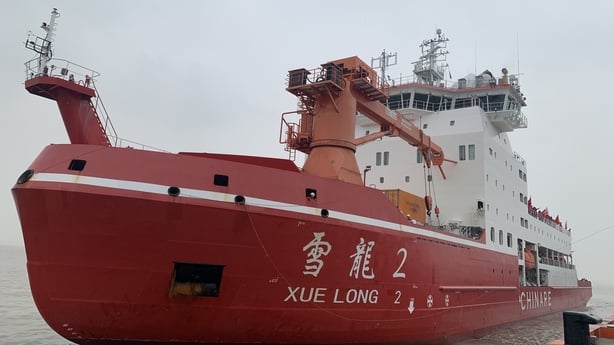
The United States Coast Guard’s icebreaking fleet, by comparison, is old and ill-equipped for the demands the changing polar seascape presents – a situation which Ms Maddox called "absolutely absurd".
But the US is pivoting north.
Secretary of State Antony Blinken was in Norway in early June, to announce a new diplomatic post in the Norwegian Arctic town of Tromsoe.
Memorably, former President Donald Trump wanted to buy Greenland from Denmark, for the same reasons. The Danes said no.
But, with Russia, China and the US increasing their activity in the high north, experts fear that the great power rivalry could spill over.
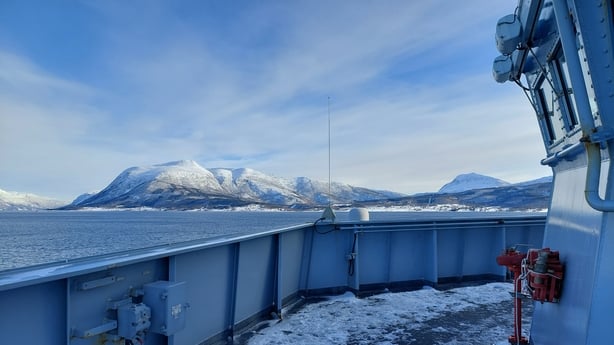
"The tensions resulting from the war in Ukraine has led to increased military air and naval activity and alertness in the Arctic," Prof Moe said.
"In the present situation there is a growing risk that unintended incidents, for example a collision between warships could escalate into a bigger conflict."
Treasure or trouble
Scientists predict that the Arctic Sea will see its first ice-free summer by 2034.
"I wouldn’t be surprised it was before that," said Ms Maddox.
And while the thaw promises riches in the form of energy and mineral resources, there are horrors entombed in the ice too.
As the ancient frozen carbon warms, an estimated 1,700 billion tonnes of methane and carbon dioxide could leach into the atmosphere, knocking the UN climate targets beyond reach.
Meanwhile, the melting ice caps are expected to change the weather patterns for the rest of the world, including Ireland.
"This increased light fresh water may then slow down the deep ocean circulation and Gulf Stream. This means colder winters can occur together with hot summer extremes in your area," Seung-Ki Min, a climate scientist at Pohang University of Science and Technology in South Korea, told RTÉ News.
No one expected the frozen ground known as permafrost in the Arctic region to melt – and so factories, bio-laboratories and hydrocarbon extraction plants were built on it. Now they are at risk of collapse.
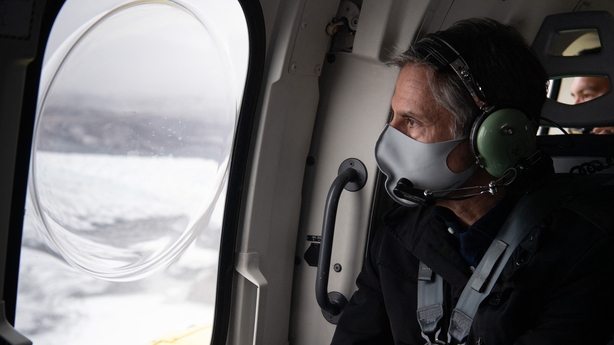
The Arctic was the scene of one of the world’s biggest oil spills in 2020, when a Russian-owned diesel tank broke open.
And what about the zombie pathogens?
"Certain spores, like anthrax, tuberculosis, or smallpox can actually persist in the environment for tens of thousands of years," Ms Maddox said.
"In some places there are graveyards for smallpox victims or Spanish flu victims that are starting to have the bodies uncovered," she added.
Many species of birds use the Artic as a flyway on their global migration, raising fears about the spread of disease among local populations and across the planet.
In the event of a health or environmental disaster in its territory, would Russia share information with the rest of the world?
"Russia is the biggest Arctic country," Prof Moe said.
"Without Russia, cooperation projects become less meaningful, especially in the research field. The task is to find ways to organise working groups that can preserve the very important exchange of data."
In the fast-changing climate of the high north, multilateral cooperation seems more crucial than ever. But with Russia’s ongoing assault on Ukraine, the chances remain on thin ice.







